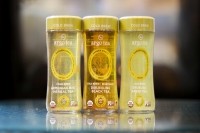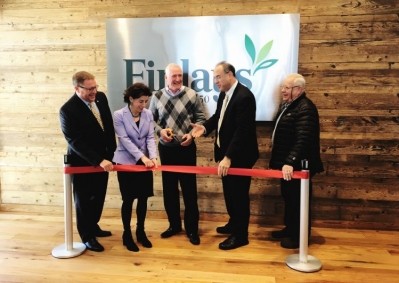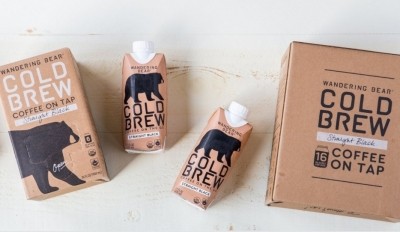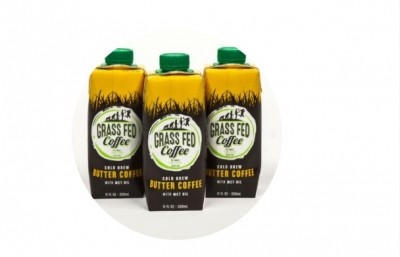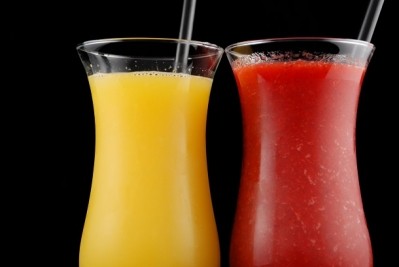60-second interview: Greg Bach and Angela Lantman, Synergy Flavors
What’s trending in ready-to-drink tea? From lavender and rose to cold brew
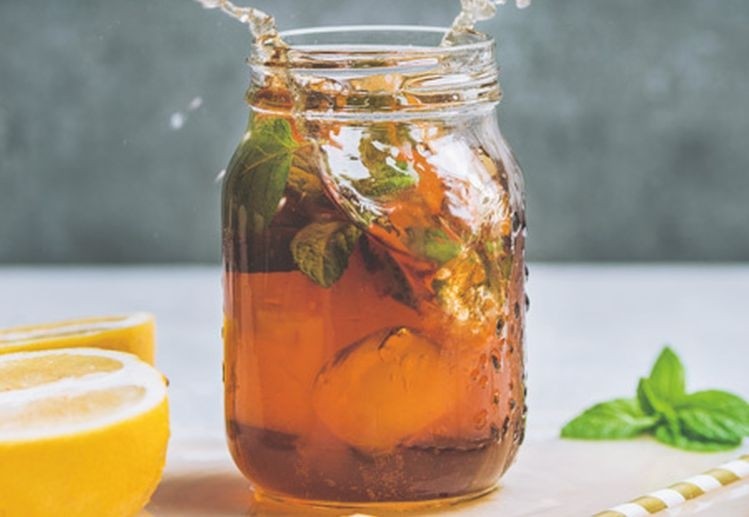
To find out, FoodNavigator-USA caught up with Greg Bach (GB), general manager, and Angela Lantman (AL), product development manager, at Synergy Flavors, which offers a variety of essences, extracts and concentrates in white, green and black tea varieties as well as some common herbal profiles such as rooibos.
Volatile flavor components (essences) are first captured, before soluble solids are extracted and concentrated. These can then be combined to create concentrates.
How has the RTD market changed in recent years?
AL: I’d say that the nuances and the flavor profiles of RTD tea are slowly catching up with loose leaf tea, but as far as the quality, in general I’d say it’s not catching up, because the market remains quite price driven.
GB: There’s still a lot of what I’d call ‘brown sweet water’ out there.
How is the sugar reduction trend impacting the RTD tea market?
AL: As consumers seek out clean labels and lower sugar products, tea works really well with those trends because people do drink unsweet or less sweet tea, whereas in an energy drink, for example, you may need sweetness to cover up off notes. If you decrease the sugar, you have to pay more attention to the natural astringency and bitterness in tea, so you may have to pick a different variety or use fewer tea solids to mellow it all out.
When it comes to stevia and monk fruit, tea is a pretty forgiving media, so both sweeteners work well.
GB: I like sweet tea, but when I sample RTD teas in the marketplace, I find that the sweetening systems often get in the way of appreciating the underlying taste of the tea; it’s hard to be a tea connoisseur when you are sorting through all the brix solids of sugar.
What flavor trends are you seeing in the RTD tea market?
AL: Customers are exploring new flavor profiles, so we’re seeing more floral flavor profiles such as lavender, rose, and hibiscus, plus we’re seeing requests for more unusual flavor blends, things like lemon basil, or strawberry basil [Synergy also sells fruit, vegetable and botanical essences such as watermelon, strawberry, cucumber, carrot, basil, and hibiscus].
GB: We’re seeing growing interest in provenance, and more callouts on product labels [Synergy’s ‘World of Tea’ program features extracts with single provenance origin geographies including Argentina, China, Indonesia, Kenya, Malawi, and India] because people like the romance, knowing where their tea comes from.
Could cold brew tea be as big as cold brew coffee?
GB: On the back of the whole cold brew coffee trend [coffee brewed in water at room temperature, which delivers a less astringent taste and brings in a whole new set of drinkers], more folks are talking about cold brew tea, but it doesn’t extract very well at room temperature. It’s an interesting trend and we’ll continue to watch this, as cold brew tea definitely tastes smoother, but I think a lot of tea drinkers actually appreciate the astringency of tea, so that may be why it hasn’t taken off in the same way that coffee has.
What other requests are you getting?
GB: We’re seeing more requests for tea that would go into fermented beverages, and we’re seeing more requests for certain varietals such as rooibos [plant brewed into a reddish-brown herbal infusion called ‘red bush tea’].
What about matcha?
AL: We get requests for matcha, but I think people don’t fully understand what it is, because they ask for matcha ‘flavors,’ when matcha is actually ground tea leaves, so we can’t provide ‘matcha’ as a flavor profile.
Which beverages categories grew in 2017 (US retail, dollar sales)?
- Sparkling flavored water +15.6%
- RTD coffee +11.7%
- Bottled water +2.9%
- Energy drinks +2.5%
- RTD tea +1.3%
Which beverages categories fell in 2017 (US retail, dollar sales)?
- Still flavored water -0.7%
- Regular (full-sugar) carbonates -1.1%
- Carbonated beverages total -1.6%
- Refrigerated juices -2.5%
- Low/zero calorie carbonates -2.8%
- Shelf stable juices -3%
- Sports drinks -3.3%
Source: Nielsen data, total US xAOC including convenience, 52 weeks to November 4, 2017, collated by Wells Fargo.
How is most ready-to-drink tea manufactured on a commercial-scale?
AL: Some companies are brewing their own tea at scale and bottling it, but others are buying extracts, flavors and essences from companies like us, and then there are companies that are using instant tea powder, and adding flavors.
How do consumers view the options above?
GB: I think there is not necessarily a hierarchy in the [consumer] marketplace, but people that know tea would say that fresh brewed is the absolute best, it’s not even in the same category [as extracts, powders etc], but the problem is that it’s hard to do super-consistently, and companies that do this have marketed their products so that consumers know to expect some variation. After that, liquid extracts are at the top of the hierarchy followed by products made with powder [soluble spray-dried tea powder].
What does ‘brewed tea’ mean on a product label?
AL: There is not a standard of identity for ‘brewed tea,’ so even with powdered tea, you could call it ‘brewed’ because at some point in time the tea leaves have hit hot water, and were brewed.
GB: If you see ‘fresh brewed tea’ on a label, however, that would generally mean the company is bringing in tea leaves and steeping it themselves, while ‘brewed tea’ could be anything, depending on the brand.
What are the options available to formulators who want to make a RTD tea, but don’t want to brew leaves themselves?
AL: If you want something as close as possible to fresh brewed tea you’d typically want extracts, which contain the color, the solids, the mouthfeel and the astringency, and then for the aroma, the top notes, you would want essences: clear, aromatic products [volatile flavor components]. Then you can put those two together in a tea concentrate.
GB: In terms of a hierarchy, the best option is combining tea essences with a liquid extract, followed by combining essences with tea powders, and then finally, combining essences with caramel color and something to give you mouthfeel. On a price per pound basis, tea essences tend to be more expensive, but it doesn’t take very much to tip a tea in a certain direction, so a small amount can go a very long way.
When it comes to what people want in terms of the extracts, some people want more astringency, others are going for more ‘gulpability.’
*Data from Nielsen, total US xAOC including convenience, 52 weeks to November 4, 2017, collated by Wells Fargo.
About four in five Americans – and 87% of Millennials - drink tea, which can be found in almost 80% of all US households, with the strongest concentration in the south and northeast. About 80% of all tea consumed in the US in 2016 was black tea, 16% was green tea, and the remaining amount was oolong, white, or dark tea.
Very unusually – compared with the rest of the world – around 80% of tea consumed in America is iced tea (cold, ready-to-drink tea).
Black, green, oolong, dark and white teas all come from the same plant (Camellia sinensis). Black tea is fully oxidized and oolong teas are partially oxidized. After withering and rolling, the tea leaves undergo natural chemical reactions resulting in taste and color changes and that develop teas’ distinguishing characteristics. Green and white teas are not oxidized after leaf harvesting; oolong tea is midway between black and green teas in strength and color; dark teas are fermented after manufacture.
Source: Tea Association of the USA

